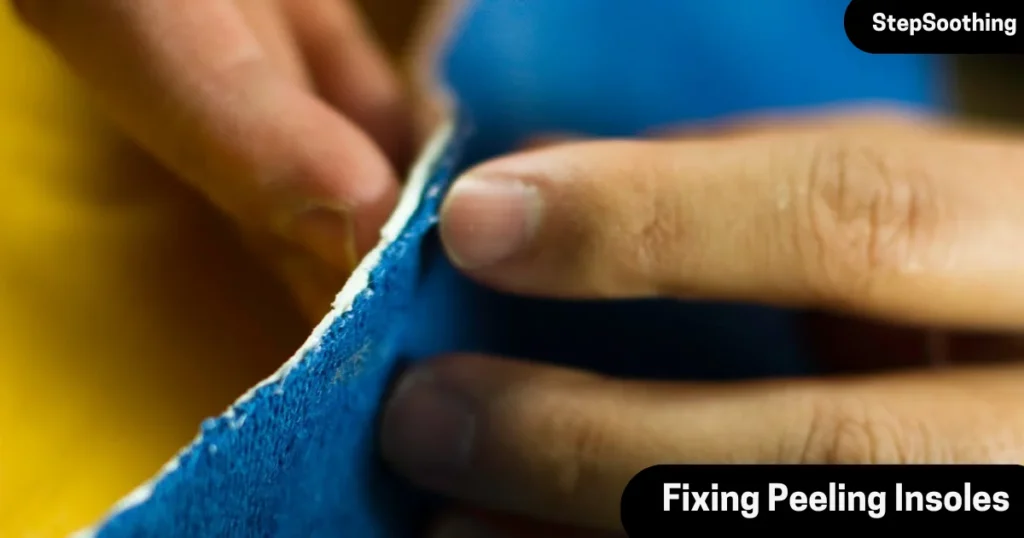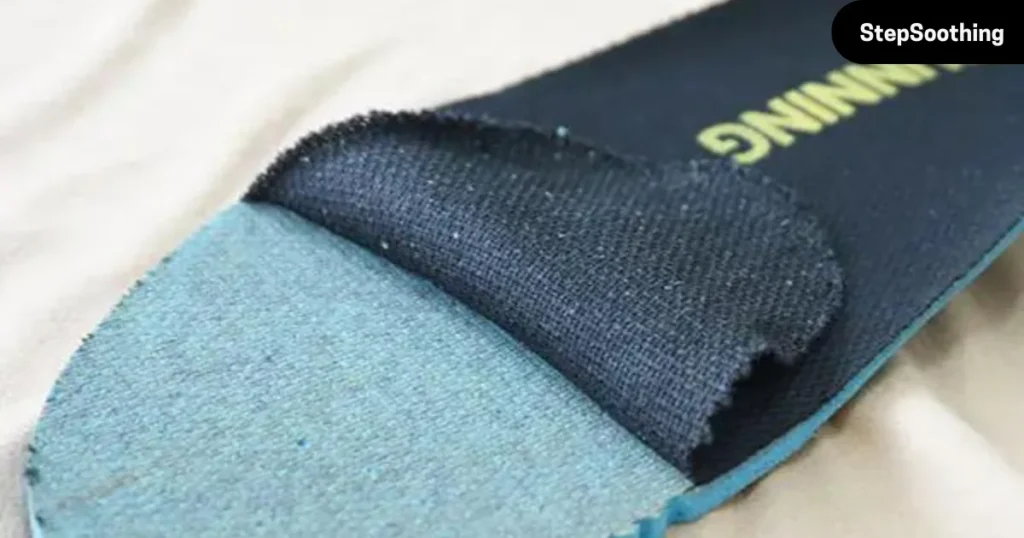When your favorite pair of shoes starts to feel less comfortable, one culprit may be peeling insoles. Peeling insoles can not only compromise the comfort of your shoes but also affect your foot health. In this comprehensive guide, we’ll delve into the causes of peeling insoles and provide expert solutions to fix them, ensuring your feet stay happy and comfortable.

Understanding Peeling Insoles
Peeling insoles can result from various factors, including wear and tear, poor adhesive quality, and exposure to moisture and humidity. Over time, the constant pressure and friction from walking can cause the adhesive bond between the insole and the shoe to weaken, leading to peeling.
Additionally, low-quality adhesive used during manufacturing or exposure to moisture can exacerbate the problem. Peeling insoles not only compromise the structural integrity of your shoes but can also lead to discomfort and foot pain.
Step-by-Step Solutions
1. Assessing the extent of damage:
Before attempting any repairs, carefully examine the extent of peeling to determine the best course of action.
2. Cleaning and drying the insoles:
Remove the insoles from your shoes and clean them thoroughly with a mild detergent and water. Allow them to dry completely before proceeding to the next step.
3. Selecting appropriate adhesive materials:
Choose a high-quality adhesive specifically designed for bonding shoe materials. Options include shoe repair glue, contact cement, or specialized insole repair adhesives.
4. Applying adhesive effectively:
Apply a thin, even layer of adhesive to both the insole and the shoe surface. Avoid using excessive amounts of adhesive, as it can lead to a messy application and interfere with the bonding process.
5. Ensuring proper drying time:
Follow the manufacturer’s instructions regarding drying time to allow the adhesive to bond effectively. Avoid wearing the shoes until the adhesive has fully cured to prevent reoccurrence of peeling.
6. Reinserting insoles and testing for comfort:
Once the adhesive has dried, reinsert the insoles into your shoes and test for comfort. Make any necessary adjustments to ensure a snug fit and optimal support for your feet.

Expert Tips and Tricks
1. Using specialized insole repair kits:
Consider investing in a specialized insole repair kit, which often includes all the necessary tools and materials for quick and effective repairs.
2. Exploring professional repair services:
If you’re not confident in your DIY skills or the damage is extensive, seek professional repair services from a reputable shoe repair shop or cobbler.
3. Preventive measures to prolong insole lifespan:
Take proactive measures to prevent peeling insoles in the future, such as storing shoes properly, regularly cleaning and maintaining insoles, and wearing moisture-wicking socks to reduce moisture buildup.
FAQs about Peeling Insoles
Q1. How common is the issue of peeling insoles?
Peeling insoles are a common issue, especially in shoes that are frequently worn or exposed to harsh environmental conditions.
Q2. Can I fix peeling insoles myself or do I need professional help?
Minor cases of peeling insoles can often be fixed at home using DIY methods and readily available adhesive materials. However, extensive damage may require professional repair services.
Q3. What types of adhesive are best for repairing insoles?
High-quality shoe repair glue, contact cement, or specialized insole repair adhesives are recommended for repairing peeling insoles.
Q4. Are there any temporary fixes for peeling insoles?
While temporary fixes such as using double-sided tape or adhesive pads may provide temporary relief, they are not a permanent solution and may need to be reapplied frequently.
Read More
Conclusion
Peeling insoles can be a nuisance, but with the right techniques and materials, they can be effectively repaired, restoring comfort and functionality to your shoes. By following the step-by-step solutions outlined in this guide and implementing preventive measures, you can ensure that your feet stay happy and comfortable for years to come.



